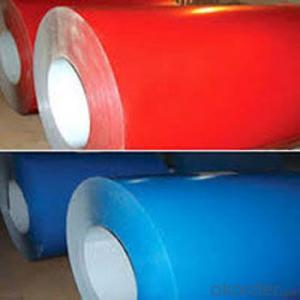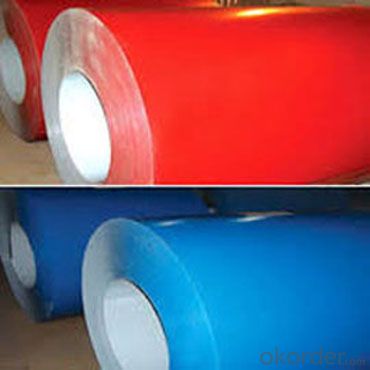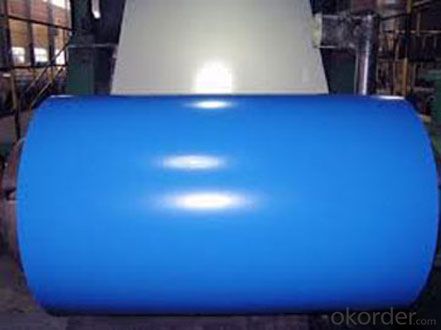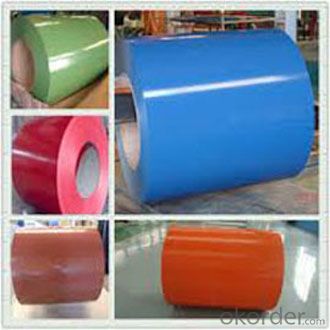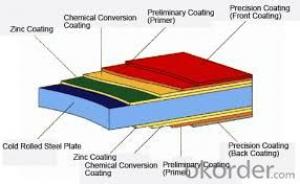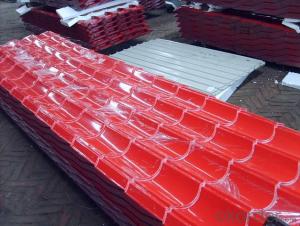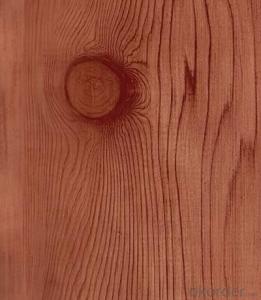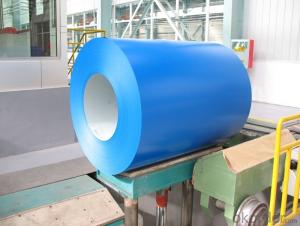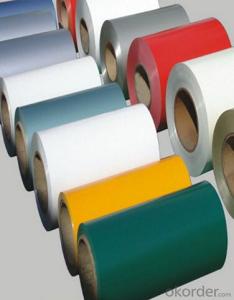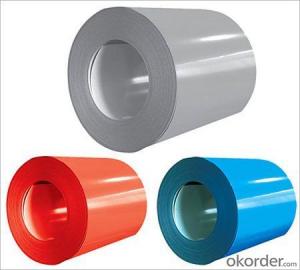Pre-Painted Galvanized (PPGI) Color Coated Steel Coil For Constructure
- Loading Port:
- China main port
- Payment Terms:
- TT OR LC
- Min Order Qty:
- 25 m.t.
- Supply Capability:
- 10000 m.t./month
OKorder Service Pledge
OKorder Financial Service
You Might Also Like
Pre-Painted Galvanized (PPGI) Color Coated Steel Coil For Constructure
Product Description
Pre-painted Galvanized Steel Coil
PPGI is made by cold rolled steel sheet and galvanized steel sheets as baseplate,
Through the surface pretreatment (degreasing, cleaning, chemical conversion
Processing), coated by the method of continuous coatings (roller coating method),
And after roasting and cooling.
SPECIFICATION
1. Standard: AISI, ASTM, BS, DIN, GB, JIS
2. Grade: DX51D+Z, DC51D, SPCC, SGCC, SGHC, CGCC,
3. Surface Treatment Coated: Galvanized, Paint sealant, Coating passivation solution
Substrate Cold rolled, Galvanized sheet
4. Color: RAL Color card
5. Coil ID: 508/610 mm
6. Coil weight: 4-10MT
7. Paint film Front side: 10~25um
Back side: 5~10um
8. Zinc layer: 40~180g per square meter
9. Thickness: 0.14~3.0mm
10. Width: 400~1500mm
11. Length: As requirement
12. Type: Steel plate, Steel Coil, Roofing metal
13. Place of origin: Shandong CHINA(mainland)
14. Deliver time: 20-30 days after receipt of advanced t/t or L/C
Advantages
1. Our company produce various specification and models and national standards of galvanized steel coil
2. Using high-quality material and advanced production technology and equipment for processing
3. Applicable to a humid climate and the harsh corrosive environment
4. Products has been all over the country more than 20 provinces, municipalities and
Autonomous regions, and have been exported to Europe, North American, the Middle East,
The South East Asia, Africa, Asia, European and other countries and regions, well received by our buyer.
commodity | Color-coated Galvanized Steel Coil (PPGI/ PPGL) |
Techinical Standard: | JIS G3302-1998, EN10142/10137, ASTM A653 |
grade | TSGCC, TDX51D / TDX52D / TS250, 280GD |
Types: | For general / drawing use |
Thickness | 0.14-2.0mm(0.16-0.8mm is the most advantage thickness)) |
Width | Width: 610/724/820/914/1000/1200/1219/1220/1250mm |
Type of coating: | PE, SMP, PVDF |
Zinc coating | Z60-150g/m2 or AZ40-100g/m2 |
Top painting: | 5 mic. Primer + 15 mc. R. M. P. |
Back painting: | 5-7 mic. EP |
Color: | According to RAL standard |
ID coil | 508mm / 610mm |
Coil weight: | 4--8MT |
Package: | Properly packed for ocean freight exportation in 20' ' containers |
Application: | Industrial panels, roofing and siding for painting / automobile |
Price terms | FOB, CFR, CIF |
Payment terms | 20%TT in advance+80% TT or irrevocable 80%L/C at sight |
delivery time | 25 days after recepit of 20% TT |
Remarks | Insurance is all risks |
MTC 3.1 will be handed on with shipping documents | |
We accept SGS certificatation test |
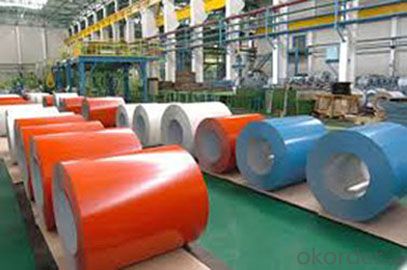
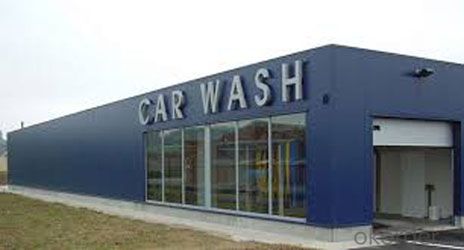
FAQ
1.What's your MOQ?
25MT, it is for one container.
2.Do you have QC teams?
Yeah, sure, our QC team is very important, they will keep the quality control for our products.
3. What's your normal delivery time?
Our delivery time about 10-20days for standard sizes, if you have other requirements like hardness and width ,it is about 20-40days. But don't worry ,we also try our best for the delivery time ,because time longer and our cost is higher.
- Q: How are steel coils used in the manufacturing of automotive hoods?
- Steel coils are used in the manufacturing of automotive hoods as the primary raw material. These coils are processed and formed into the desired shape and size to create the hood. The steel's strength and durability make it an ideal choice for automotive hoods, providing protection and structural integrity to the vehicle.
- Q: How do steel coils contribute to the HVAC ductwork industry?
- The HVAC ductwork industry relies heavily on steel coils as they are essential for creating ducts. These coils, typically made from galvanized steel, offer numerous advantages in this industry. First and foremost, steel coils are known for their durability and longevity, making them perfect for constructing HVAC ductwork. They can withstand high temperatures, pressure, and exposure to various environmental elements. This durability ensures that the ducts made from steel coils can effectively transport air for long periods without deteriorating or compromising their structural integrity. Moreover, steel coils are highly flexible and can be easily manipulated during the fabrication process. HVAC ductwork often requires customization to fit specific building layouts and designs. Steel coils can be effortlessly cut, bent, and shaped without sacrificing their strength. This flexibility allows for the production of ducts in different sizes, shapes, and configurations to meet the unique requirements of various HVAC systems. Additionally, steel coils provide excellent resistance to corrosion and fire. The galvanized coating on the steel surface acts as a protective layer, preventing rust and corrosion caused by moisture or chemical reactions. This corrosion resistance ensures that the ductwork remains functional and safe for an extended period. Furthermore, steel coils contribute to energy efficiency in the HVAC ductwork industry. The smooth surface of steel coils reduces air friction and turbulence within the ducts, resulting in smoother airflow and reduced energy loss. This improved energy efficiency leads to cost savings for building owners and occupants, as it reduces the amount of energy required to maintain a comfortable indoor environment. Finally, steel coils are readily available and cost-effective, making them a popular choice for HVAC ductwork fabrication. The market offers a wide supply of steel coils, ensuring efficient production and installation of ductwork systems. Additionally, their cost-effectiveness makes them an economical option for both small and large-scale HVAC projects. In conclusion, steel coils play a crucial role in the HVAC ductwork industry by providing a durable, flexible, corrosion-resistant, energy-efficient, and cost-effective material for duct fabrication. These unique properties ensure the construction of high-quality ductwork systems that effectively distribute air in buildings, promoting optimal comfort and functionality.
- Q: Can steel coils be coated with chrome?
- Yes, steel coils can be coated with chrome. The process of chrome plating involves the application of a thin layer of chromium onto the surface of the steel coils to enhance their appearance, provide corrosion resistance, and improve their durability.
- Q: What are the different methods of laminating steel coils?
- There are several different methods of laminating steel coils, each with its own advantages and applications. The most common methods include hot rolling, cold rolling, and continuous annealing. Hot rolling is a process in which steel is heated above its recrystallization temperature and then passed through a series of rollers to produce thin sheets or coils. This method is commonly used for producing large quantities of steel with a consistent thickness and surface finish. Hot rolled steel coils are often used in structural applications, such as construction and automotive manufacturing. Cold rolling, on the other hand, involves passing the steel coil through a series of rollers at room temperature. This process not only reduces the thickness of the steel but also improves its surface finish and mechanical properties. Cold rolled steel coils are typically used in industries that require high precision and quality, such as appliance manufacturing, electrical equipment, and automotive components. Continuous annealing is another method of laminating steel coils. It involves heating the steel coil to a specific temperature and then slowly cooling it in a controlled environment. This process helps to relieve internal stresses and improve the steel's mechanical properties, such as strength and ductility. Continuous annealing is often used for producing high-quality steel coils for applications that require superior surface finish and formability, such as automotive body panels and household appliances. Other less common methods of laminating steel coils include electro-galvanizing, which involves coating the steel with a layer of zinc through an electroplating process, and hot-dip galvanizing, where the steel coil is dipped into a bath of molten zinc. These methods are primarily used for corrosion protection and are commonly seen in the construction industry, particularly for outdoor structures and infrastructure. In summary, the different methods of laminating steel coils include hot rolling, cold rolling, continuous annealing, electro-galvanizing, and hot-dip galvanizing. Each method offers distinct benefits and is chosen based on the specific requirements of the application.
- Q: Basically when i'm older, my dream Job would be, to be to start a steel mill, I've always loved the idea of working in Business and investing in things has always been a hobby of mine. i play games where u invest and make money. all i need is some facts about starting a steel mill?What requirements i need,- How time consuming is it,- How easy is it,- How to get started,- The Perks,- The downsides..how much would it cost to start one, like land, place, iron etc, to get started? also i would need a bank loan, how much money will the bank give me ? 80%??
- Typically, steel mills are worth $20 million to $200 million and are owned by large corporations. Your best bet to own one would be to take over a corporation that already has one. That way you have all the supply lines, customers, experts and other workers already there, too. Stick with investing in going concerns, so you don't need to be an expert in each business to build it up. Get them ready made, learn the details from the people already doing it, then work out ways to improve it. Do not get tempted to borrow even 10c from the scammers who have answered your question. Start saving your real money, reading the financial news, and making small real investments in real stocks.
- Q: How are steel coils used in the production of electrical equipment?
- Steel coils are used in the production of electrical equipment as they serve as the core component for transformers. The coils are made from high-quality steel to ensure efficient electrical conductivity and magnetic properties. They are wound around a core to create an electromagnetic field that helps in the transformation of voltage levels, enabling the smooth transmission and distribution of electricity.
- Q: How does the steel coil market vary regionally?
- The steel coil market is subject to regional variations due to a variety of factors, including the level of industrialization, economic development, and the particular demands and requirements of each region. In well-developed regions such as North America and Europe, the steel coil market is quite mature and highly competitive. These regions have established manufacturing industries and infrastructure, resulting in a strong demand for steel coils across various sectors like automotive, construction, and machinery. Technological advancements, product innovation, and the need for high-quality materials drive the market in these areas. On the other hand, developing regions like Asia-Pacific, Latin America, and the Middle East & Africa are experiencing rapid industrialization and urbanization, leading to an increased demand for steel coils. These regions have growing construction sectors, thriving automotive industries, and a rise in infrastructure projects, all contributing to the growing need for steel coils. Moreover, the availability of cheap labor and raw materials in some of these regions makes them attractive for steel coil production. Additionally, regional variations in regulations and trade policies also impact the steel coil market. Tariffs, import/export restrictions, and government initiatives promoting domestic production can affect market dynamics. For example, protectionist measures like trade barriers or anti-dumping policies can restrict the import of steel coils, leading to increased domestic production and regional market growth. Geographical factors and climate conditions also play a role in influencing regional steel coil markets. Coastal regions with high humidity levels and exposure to saltwater require corrosion-resistant steel coils, while inland regions with extreme temperatures may demand coils with specific mechanical properties to withstand such conditions. Overall, the steel coil market varies from region to region due to differences in industrialization, economic factors, specific demands, regulations, and geographical considerations. It is essential for steel coil manufacturers, suppliers, and consumers to understand these variations in order to effectively navigate the market and take advantage of the opportunities that exist in each region.
- Q: What are the common methods of testing the strength of steel coils?
- Common methods of testing the strength of steel coils include tensile testing, hardness testing, and bend testing. Tensile testing involves subjecting the steel coil to tension until it reaches its breaking point. This test measures the maximum amount of force the coil can withstand before it fractures. It provides valuable information about the tensile strength, yield strength, and elongation properties of the steel. Hardness testing is another common method used to determine the strength of steel coils. It measures the resistance of the steel to indentation or scratching. Various methods, such as Rockwell, Brinell, or Vickers tests, are employed to measure the hardness of the steel. Hardness testing provides information about the material's ability to resist deformation or wear. Bend testing is performed to evaluate the ductility and flexibility of the steel coil. In this test, the coil is bent to a specific angle and inspected for signs of cracking or fracturing. Bend testing helps determine the material's ability to withstand bending or forming processes without failure. Other methods of testing the strength of steel coils may include impact testing, where a controlled impact is applied to the coil to assess its resistance to sudden loading conditions, and fatigue testing, which involves subjecting the coil to cyclic loading to determine its endurance limit and potential for failure under repeated stress. It is important to note that the specific testing methods employed may vary depending on the intended application and industry standards. Additionally, non-destructive testing techniques, such as ultrasonic testing or magnetic particle inspection, can be used to detect internal defects or flaws in steel coils without causing damage to the material.
- Q: How are steel coils used in the manufacturing of industrial pumps?
- Steel coils are used in the manufacturing of industrial pumps as they are typically used to construct the pump housing and impellers, providing the necessary strength and durability for handling high-pressure fluids and withstanding harsh operating conditions. The steel coils are processed and shaped into various components, ensuring the structural integrity and reliability of the pump, ultimately contributing to its efficient operation and long lifespan.
- Q: How are steel coils used in the manufacturing of renewable energy equipment?
- Steel coils are used in the manufacturing of renewable energy equipment as they serve as a crucial component for structural support and durability. These coils are often used to construct the frames and structures of wind turbines, solar panels, and other renewable energy equipment. Additionally, steel coils are used for the production of electrical transformers and generators, which are vital for converting renewable energy sources into usable electricity.
Send your message to us
Pre-Painted Galvanized (PPGI) Color Coated Steel Coil For Constructure
- Loading Port:
- China main port
- Payment Terms:
- TT OR LC
- Min Order Qty:
- 25 m.t.
- Supply Capability:
- 10000 m.t./month
OKorder Service Pledge
OKorder Financial Service
Similar products
Hot products
Hot Searches
Related keywords
